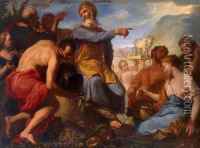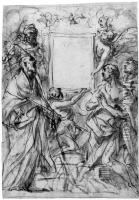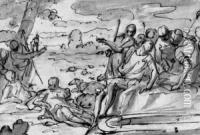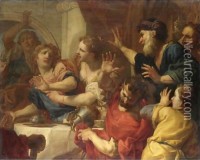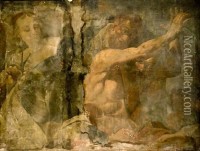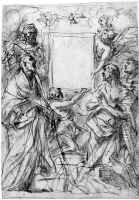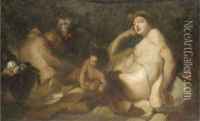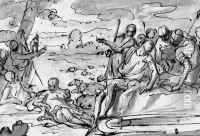Antonio Molinari Paintings
Antonio Molinari was an Italian painter of the Baroque era, celebrated for his vigorous and dramatic style. Born in Venice in 1655, Molinari was deeply influenced by the dynamic works of Paolo Veronese and the Venetian tradition. He is often regarded as one of the last significant painters of the Venetian Baroque period. Molinari's work is characterized by strong chiaroscuro, powerful figures, and a rich use of color, which was typical of the Venetian style. Molinari's father was also a painter, which allowed him to grow up in an environment conducive to his artistic development.
Molinari's early works demonstrate a mastery of the Baroque style, with energetic compositions and a bold approach to narrative painting. He was particularly adept at large-scale religious scenes, which often featured dramatic lighting and intense emotional expressions. His paintings were sought after for churches and private patrons, reflecting the tastes of the Counter-Reformation period, which favored emotionally engaging and didactic religious art.
Throughout his career, Molinari also produced a number of mythological and allegorical works, which showcased his versatility and imagination. His ability to infuse these subjects with vibrancy and a sense of movement is particularly notable. Despite his success, Molinari's life was relatively short, as he died in Venice in 1704 at the age of 49. His legacy continued through his influence on later artists and his contributions to the Baroque movement in Venice. Today, his works can be found in various museums and collections around the world, and he is remembered for his passionate and dynamic approach to painting.
